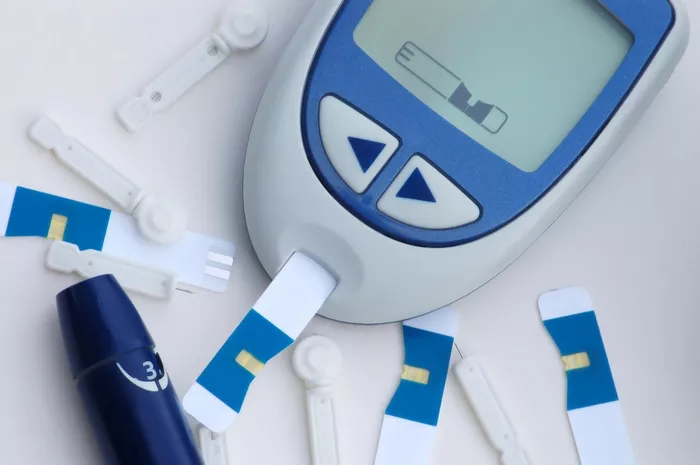Insulin resistance is a metabolic condition where the body’s cells become less responsive to the hormone insulin, leading to elevated blood glucose levels. It is a key feature of type 2 diabetes and is often associated with other health conditions such as obesity, hypertension, and dyslipidemia. Effective management of insulin resistance is crucial to prevent the progression to type 2 diabetes and reduce the risk of associated complications. Medication plays a significant role in this management. This article will explore the various medications used to treat insulin resistance, their mechanisms, benefits, potential side effects, and considerations for use.
Understanding Insulin Resistance
Insulin resistance occurs when the body’s cells, including muscle, fat, and liver cells, do not respond effectively to insulin. As a result, the pancreas produces more insulin to help glucose enter the cells, leading to elevated levels of insulin in the blood (hyperinsulinemia). Over time, this condition can lead to type 2 diabetes and other metabolic disorders.
Causes of Insulin Resistance
Several factors contribute to insulin resistance, including:
Genetic Factors: A family history of type 2 diabetes increases the risk of insulin resistance.
Obesity: Excess body fat, particularly abdominal fat, is strongly associated with insulin resistance.
Physical Inactivity: A sedentary lifestyle can contribute to the development of insulin resistance.
Unhealthy Diet: Diets high in refined sugars, processed foods, and saturated fats can exacerbate insulin resistance.
Hormonal Imbalances: Conditions like polycystic ovary syndrome (PCOS) and Cushing’s syndrome can affect insulin sensitivity.
Medication Options for Insulin Resistance
Managing insulin resistance often involves a combination of lifestyle changes and medication. The choice of medication depends on various factors, including the presence of other health conditions, the severity of insulin resistance, and individual patient needs. Here are the primary medications used to treat insulin resistance:
1. Metformin
Metformin is the first-line medication for managing insulin resistance and type 2 diabetes.
Mechanism of Action: Metformin works by decreasing glucose production in the liver and improving insulin sensitivity in muscle cells. It also enhances the uptake and utilization of glucose by cells.
Benefits: It is effective in lowering blood glucose levels, reducing hemoglobin A1c (HbA1c), and promoting weight loss. Metformin also has cardiovascular benefits and is associated with a lower risk of certain cancers.
Side Effects: Common side effects include gastrointestinal issues such as nausea, diarrhea, and abdominal discomfort. Rarely, it can cause lactic acidosis, a serious condition that requires prompt medical attention.
Considerations: Metformin is generally well-tolerated and can be used in combination with other medications. It is often preferred due to its long-standing track record and safety profile.
2. Thiazolidinediones (TZDs)
TZDs, such as pioglitazone and rosiglitazone, are another class of medication used to improve insulin sensitivity.
Mechanism of Action: TZDs work by activating peroxisome proliferator-activated receptors (PPARs), which enhance insulin sensitivity in muscle and fat cells. They also reduce insulin resistance in the liver.
Benefits: TZDs can effectively lower blood glucose levels and improve insulin sensitivity. They may also have beneficial effects on lipid profiles.
Side Effects: Common side effects include weight gain, fluid retention, and increased risk of heart failure. TZDs may also increase the risk of bone fractures and bladder cancer.
Considerations: TZDs should be used with caution in individuals with a history of heart failure or significant edema. Regular monitoring and risk assessment are essential when using this class of medication.
3. DPP-4 Inhibitors
Dipeptidyl peptidase-4 (DPP-4) inhibitors, such as sitagliptin, saxagliptin, and linagliptin, are used to manage insulin resistance and type 2 diabetes.
Mechanism of Action: DPP-4 inhibitors work by preventing the breakdown of incretin hormones, which stimulate insulin release and inhibit glucose production in the liver. This helps to improve insulin sensitivity and lower blood glucose levels.
Benefits: These medications are generally well-tolerated and have a low risk of hypoglycemia. They also have a neutral effect on weight.
Side Effects: Common side effects include upper respiratory tract infections, headache, and gastrointestinal symptoms. Rarely, they may cause pancreatitis.
Considerations: DPP-4 inhibitors can be used alone or in combination with other medications. They are often chosen for their favorable safety profile and ease of use.
4. GLP-1 Receptor Agonists
Glucagon-like peptide-1 (GLP-1) receptor agonists, such as exenatide, liraglutide, and dulaglutide, are used to treat insulin resistance and type 2 diabetes.
Mechanism of Action: GLP-1 receptor agonists mimic the action of the GLP-1 hormone, which enhances insulin secretion, inhibits glucagon release, and slows gastric emptying. This leads to improved blood glucose control and weight loss.
Benefits: These medications can significantly lower blood glucose levels and promote weight loss. They may also have cardiovascular benefits.
Side Effects: Common side effects include nausea, vomiting, and diarrhea. There is a potential risk of pancreatitis and thyroid tumors, though these are rare.
Considerations: GLP-1 receptor agonists are typically used in combination with other medications and may require injection. They are suitable for individuals who need additional glycemic control and weight management.
5. SGLT2 Inhibitors
Sodium-glucose co-transporter 2 (SGLT2) inhibitors, such as canagliflozin, dapagliflozin, and empagliflozin, are a newer class of medication for managing insulin resistance and type 2 diabetes.
Mechanism of Action: SGLT2 inhibitors work by blocking the reabsorption of glucose in the kidneys, leading to increased glucose excretion in the urine. This helps to lower blood glucose levels and reduce insulin resistance.
Benefits: These medications can lead to significant improvements in blood glucose control and weight loss. They also have cardiovascular and renal protective effects.
Side Effects: Common side effects include urinary tract infections, genital infections, and dehydration. There is also a risk of diabetic ketoacidosis, though this is rare.
Considerations: SGLT2 inhibitors are often used in combination with other diabetes medications. They are suitable for individuals with cardiovascular or renal issues and those looking for additional weight management options.
6. Alpha-Glucosidase Inhibitors
Alpha-glucosidase inhibitors, such as acarbose and miglitol, are used to manage postprandial blood glucose levels.
Mechanism of Action: These medications work by inhibiting enzymes in the intestines that break down carbohydrates, which slows the absorption of glucose and reduces postprandial glucose spikes.
Benefits: Alpha-glucosidase inhibitors can effectively lower postprandial glucose levels and reduce HbA1c levels.
Side Effects: Common side effects include gastrointestinal issues such as bloating, gas, and diarrhea.
Considerations: These medications are typically used in combination with other diabetes treatments and are especially useful for managing postprandial glucose levels.
7. Insulin Therapy
In some cases, insulin therapy may be required to manage blood glucose levels effectively.
Mechanism of Action: Insulin therapy involves administering insulin to help lower blood glucose levels by facilitating glucose uptake into cells.
Benefits: Insulin can provide precise control of blood glucose levels and is often used when oral medications are not sufficient.
Side Effects: Common side effects include hypoglycemia, weight gain, and injection site reactions.
Considerations: Insulin therapy requires careful monitoring and adjustment of doses to avoid hypoglycemia. It is typically used in combination with other medications when necessary.
Personalizing Medication for Insulin Resistance
Selecting the best medication for insulin resistance involves considering individual patient factors, including:
1. Patient History and Comorbidities
Existing Health Conditions: Consider any comorbid conditions, such as cardiovascular disease, renal impairment, or liver disease, when choosing medication.
Medication History: Review previous experiences with diabetes medications and any adverse reactions.
2. Lifestyle Factors
Diet and Exercise: Consider the patient’s adherence to lifestyle changes, including diet and physical activity, which can impact medication efficacy.
Weight Management: Some medications may be preferred based on their effects on weight.
3. Risk of Side Effects
Tolerance: Assess the patient’s tolerance for potential side effects and choose medications accordingly.
Monitoring Needs: Consider the need for regular monitoring and follow-up.
4. Cost and Accessibility
Insurance Coverage: Evaluate the cost of medications and insurance coverage to ensure affordability for the patient.
Availability: Ensure that the prescribed medication is readily available and accessible.
See also: What Diet is Good for Insulin Resistance?
Conclusion
The management of insulin resistance involves a multifaceted approach, with medication playing a crucial role in controlling blood glucose levels and improving insulin sensitivity. Each medication has its mechanisms, benefits, and potential side effects, and the choice of treatment should be tailored to individual patient needs.
Metformin remains the cornerstone of treatment due to its effectiveness and safety profile, but other medications such as TZDs, DPP-4 inhibitors, GLP-1 receptor agonists, SGLT2 inhibitors, and alpha-glucosidase inhibitors offer additional options for personalized care. Insulin therapy may be necessary in some cases to achieve optimal glycemic control.
A comprehensive approach that includes lifestyle modifications, regular monitoring, and patient-specific considerations will help achieve the best outcomes in managing insulin resistance. Continued research and advancements in treatment options will further enhance our ability to address this prevalent condition effectively.
Related topics:
What Fruits Are Good for Insulin Resistance?

























